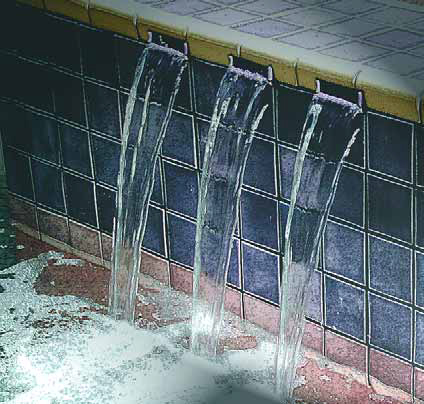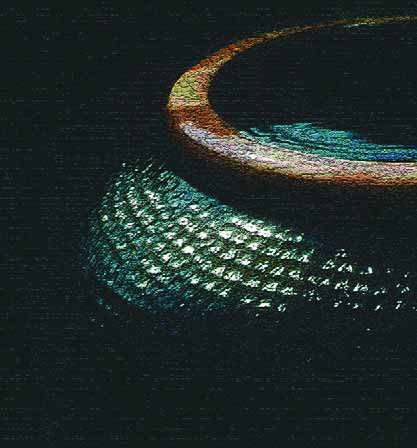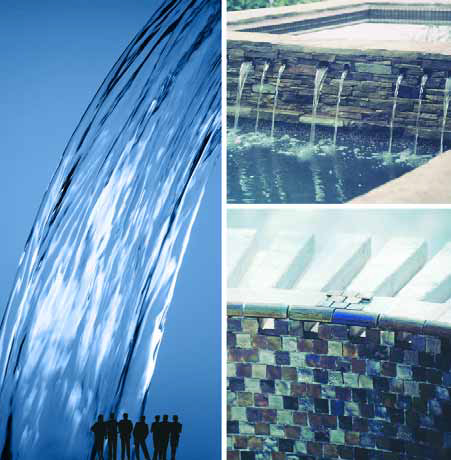sound
I've always been fascinated by the concept of urbanism as defined by Thomas Jefferson: He boiled it down to the notion that everyone should have his or her own private space as well as a buffer against the outside world. In a sense, the physical concept of the front yard fits perfectly within Jefferson's utopian ideal. At root, it's an ingenious setup that has probably endured for so many centuries because, on some level, it addresses our primal need to have land all around us. By the very configuration of our residential spaces, we each have a small, open, pastoral area that separates the privacy and sanctity of the home from adjacent public areas, sidewalks and streets. The problem is that in many modern cities and suburbs, the amount of room allocated for front yards in particular has dwindled as property values have soared and lots have become smaller and more tightly packed as a result. And when you combine that spatial shrinkage with the increased desire for safety and privacy on the part of many homeowners, it all works together to place ever-higher premiums on how we choose to make use of our small slices of front-yard land. To my mind, this dynamic set of trends
As much I enjoy seeing my own projects come to fruition, there's something wonderful in seeing watershapers I know achieve great results in their work. I admire and encourage the effort, especially when the outstanding outcomes are the result of a professional's concentrated efforts to improve his or her own skills. This is one of the reasons I teach: I take great satisfaction in sharing my techniques, sensibilities and the conviction that what I do is special, a true form of art.Sometimes I speak with former
At a time when scores of American cities are still looking for ways to revive the faded glory of their urban cores, possible approaches are as visionary (and numerous) as can be. The process has resulted in new parks, major redevelopment, architectural restorations and a long list of other solutions - including the unique watershape commissioned by the city of White Plains, N.Y. A town with 54,000 full-time residents whose population swells to more than 200,000 during the day when office workers, shoppers and visitors come calling, White Plains made the decision to invest $4.5 million of public and private grant money in resurrecting a small downtown park. Appropriately named Renaissance Plaza, the park surrounds a state-of-the-art musical fountain unveiled in October 2003 for the specific purpose of luring people back to the downtown area - and it has worked. In fact, the plaza has become such a hub of activity that nearly 1,700 units of new residential housing are now under construction in its downtown neighborhood. URBAN OBJECTIVE First settled by British colonists who bought it from the Mohican tribe in 1683, this historically rich city located 25 miles north of Manhattan has truly been reborn, and it's with no small measure of
When pursued as it should be, watershaping is all about creating a sensory experience. In fact, you could make the argument that watershapes appeal to
It's unusual to think of such a wonderfully decorative watershape in this way, but the one featured in this edition of "Details" was the result of a client's desire for a measure of safety for the front of his home. The house is located on an intersection in a hilly part of Manhattan Beach, Calif., where the steep, downhill orientation of the streets occasionally lead cars to make turns at unwisely high speeds. Given the orientation of his front door, my client was concerned that, with a bit of very bad luck, he might someday find an out-of-control-driver's car in his foyer. As is the case with many
One of the skills of a good designer is the ability to recognize those situations in which less is more. The detail pictured in these pages, for example, shows how the choice to go with a small volume of moving water (as opposed to a torrent) can add immeasurably to a composition's visual strength. Using this understated approach helps the designer or builder avoid what has become one of the biggest clichés of modern pool design - that is, the outsized waterfall spilling over a single weir from a raised spa into an adjacent swimming pool. My desire to get away from that monotonous
LeRoy, N.Y., is an historic village that's most famous (or most notorious?) for being the birthplace of Jell-O. Far more significant to me, however, is the fact that the town is filled with beautiful 19th-century homes that run the architectural gamut from Colonial to Italianate to Victorian in style. It's a beautiful place, and the site of one of my firm's most unusual projects in recent memory. The home featured in this article is a Second Empire Italianate estimated to be about 140 years old. It's a prime example of 19th-century craftsmanship, from the Mansard roof with its scrolled cornices to the drive-through porte-cochere and the wraparound porch with its beefy wood railings. It's definitely an architectural treasure, filled with the kinds of details that have been lost as far as today's custom-built homes are concerned. Mindful of those special touches, we set about designing a similar level of detail into the landscaping in creating gardens and watershapes that brought real tranquility to
In February 1999, the cover photo on the premiere issue of WaterShapes showed a steel cage for a subgrade piling being lowered into the ground. That image was taken from a feature article by designer/builder David Tisherman, the first of many that he has contributed to the magazine. In that article and in another that followed in April 1999, he detailed the design and construction of an elaborate residential swimming pool project that he
As customer demands continue to push the creativity of watershapers to new limits, industry professionals need to stay atop the trends - and nudge those of us on the supplier side to new levels of creativity as well. In some cases, this means learning how to construct new environments, such as the vanishing edges and beach entrances so many clients now want. In other cases, this expanded creativity comes from a need to know what products are available from manufacturers. Although once they were the product of on-site construction skills, sheeting waterfalls now fall largely into the category of






















